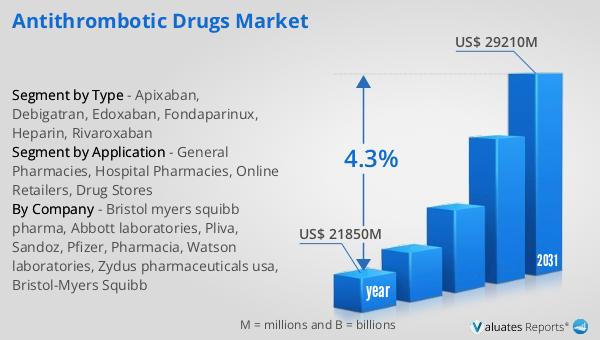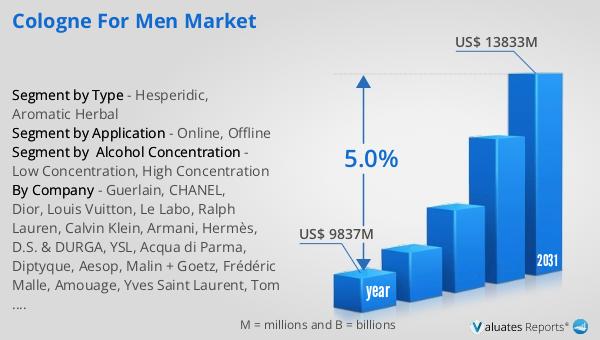What is Global Antithrombotic Drugs Market?
The Global Antithrombotic Drugs Market is a significant segment within the pharmaceutical industry, focusing on medications that prevent or treat thrombosis, which is the formation of blood clots in blood vessels. These drugs are crucial in managing conditions such as deep vein thrombosis, pulmonary embolism, and atrial fibrillation, which can lead to severe complications like strokes or heart attacks if left untreated. The market encompasses a variety of drug classes, including anticoagulants, antiplatelet drugs, and thrombolytic agents. Anticoagulants, often referred to as blood thinners, work by inhibiting the blood's ability to clot, while antiplatelet drugs prevent platelets from clumping together. Thrombolytic agents, on the other hand, dissolve existing clots. The demand for antithrombotic drugs is driven by the increasing prevalence of cardiovascular diseases, an aging population, and a growing awareness of the importance of early diagnosis and treatment of thrombotic disorders. Additionally, advancements in drug development and delivery systems have expanded the options available to healthcare providers, enhancing patient outcomes. The market is characterized by intense competition among pharmaceutical companies, with ongoing research and development efforts aimed at improving the efficacy and safety profiles of these drugs.

Apixaban, Debigatran, Edoxaban, Fondaparinux, Heparin, Rivaroxaban in the Global Antithrombotic Drugs Market:
Apixaban, Dabigatran, Edoxaban, Fondaparinux, Heparin, and Rivaroxaban are key players in the Global Antithrombotic Drugs Market, each offering unique benefits and applications in the prevention and treatment of thrombotic conditions. Apixaban, marketed under the brand name Eliquis, is a direct oral anticoagulant (DOAC) that inhibits Factor Xa, an essential component in the blood coagulation process. It is widely used for preventing stroke and systemic embolism in patients with non-valvular atrial fibrillation, as well as for treating and preventing deep vein thrombosis (DVT) and pulmonary embolism (PE). Dabigatran, sold as Pradaxa, is another DOAC that works by directly inhibiting thrombin, a key enzyme in the clotting cascade. It is primarily used for stroke prevention in atrial fibrillation and for DVT and PE treatment. Edoxaban, known by the brand name Savaysa, also targets Factor Xa and is used for similar indications as Apixaban and Dabigatran. Fondaparinux, marketed as Arixtra, is a synthetic pentasaccharide that selectively inhibits Factor Xa. It is administered via injection and is used for the prevention and treatment of DVT and PE, particularly in patients undergoing orthopedic or abdominal surgery. Heparin, one of the oldest and most widely used anticoagulants, works by activating antithrombin III, which in turn inhibits thrombin and Factor Xa. It is available in both unfractionated and low molecular weight forms, with the latter offering more predictable pharmacokinetics and a lower risk of bleeding. Heparin is commonly used in hospital settings for the prevention and treatment of thromboembolic disorders. Rivaroxaban, sold under the brand name Xarelto, is another DOAC that inhibits Factor Xa. It is used for stroke prevention in atrial fibrillation, as well as for the treatment and prevention of DVT and PE. The introduction of these DOACs has revolutionized the management of thrombotic disorders, offering patients the convenience of oral administration without the need for routine monitoring, which is required with traditional anticoagulants like warfarin. However, the choice of antithrombotic therapy is often individualized, taking into account factors such as the patient's risk of bleeding, renal function, and potential drug interactions. The competition among these drugs is fierce, with pharmaceutical companies investing heavily in clinical trials to demonstrate their efficacy and safety in various patient populations. As the market continues to evolve, ongoing research is focused on developing new agents with improved therapeutic profiles and exploring novel indications for existing drugs.
General Pharmacies, Hospital Pharmacies, Online Retailers, Drug Stores in the Global Antithrombotic Drugs Market:
The usage of Global Antithrombotic Drugs Market spans across various distribution channels, including general pharmacies, hospital pharmacies, online retailers, and drug stores, each playing a crucial role in ensuring patient access to these vital medications. General pharmacies serve as a primary point of contact for patients in the community, providing convenient access to antithrombotic drugs for those managing chronic conditions such as atrial fibrillation or venous thromboembolism. Pharmacists in these settings offer valuable counseling on medication adherence, potential side effects, and interactions with other drugs, helping patients optimize their treatment outcomes. Hospital pharmacies, on the other hand, are integral to the acute management of thrombotic events, such as deep vein thrombosis or pulmonary embolism, where rapid intervention is critical. These pharmacies ensure the availability of both oral and injectable antithrombotic agents, supporting the needs of inpatients and facilitating transitions of care upon discharge. Online retailers have emerged as a convenient option for patients seeking to refill prescriptions or access medications from the comfort of their homes. The growth of e-commerce in the pharmaceutical sector has expanded the reach of antithrombotic drugs, particularly in regions with limited access to physical pharmacies. Online platforms often offer competitive pricing and home delivery services, enhancing patient convenience and adherence. Drug stores, similar to general pharmacies, provide accessible locations for patients to obtain their medications, often with extended hours and additional health services such as blood pressure monitoring or diabetes management. The availability of antithrombotic drugs across these diverse channels reflects the importance of ensuring timely and equitable access to essential medications for patients at risk of thrombotic events. As the demand for these drugs continues to grow, driven by an aging population and rising incidence of cardiovascular diseases, the role of these distribution channels in supporting patient care and medication management becomes increasingly vital. Each channel offers unique advantages, and their collective efforts contribute to the overall effectiveness of antithrombotic therapy in preventing and managing thrombotic disorders.
Global Antithrombotic Drugs Market Outlook:
The outlook for the Global Antithrombotic Drugs Market indicates a robust growth trajectory, with the market valued at approximately US$ 21,850 million in 2024. It is anticipated to expand to a revised size of US$ 29,210 million by 2031, reflecting a compound annual growth rate (CAGR) of 4.3% over the forecast period. This growth is indicative of the increasing demand for antithrombotic medications driven by the rising prevalence of cardiovascular diseases and the aging global population. In the broader context, the global pharmaceutical market was valued at 1,475 billion USD in 2022, with a projected CAGR of 5% over the next six years. This growth underscores the dynamic nature of the pharmaceutical industry, with significant investments in research and development driving innovation and the introduction of new therapies. Comparatively, the chemical drug market has shown steady growth, increasing from 1,005 billion USD in 2018 to 1,094 billion USD in 2022. This expansion highlights the ongoing demand for chemical-based therapies, including antithrombotic drugs, which remain a cornerstone of modern medical treatment. The competitive landscape of the antithrombotic drugs market is characterized by the presence of major pharmaceutical companies, each striving to enhance their product offerings and capture a larger share of the market. As the market continues to evolve, the focus remains on improving the efficacy, safety, and accessibility of antithrombotic therapies to meet the diverse needs of patients worldwide.
| Report Metric | Details |
| Report Name | Antithrombotic Drugs Market |
| Accounted market size in year | US$ 21850 million |
| Forecasted market size in 2031 | US$ 29210 million |
| CAGR | 4.3% |
| Base Year | year |
| Forecasted years | 2025 - 2031 |
| Segment by Type |
|
| Segment by Application |
|
| Consumption by Region |
|
| By Company | Bristol myers squibb pharma, Abbott laboratories, Pliva, Sandoz, Pfizer, Pharmacia, Watson laboratories, Zydus pharmaceuticals usa, Bristol-Myers Squibb |
| Forecast units | USD million in value |
| Report coverage | Revenue and volume forecast, company share, competitive landscape, growth factors and trends |
